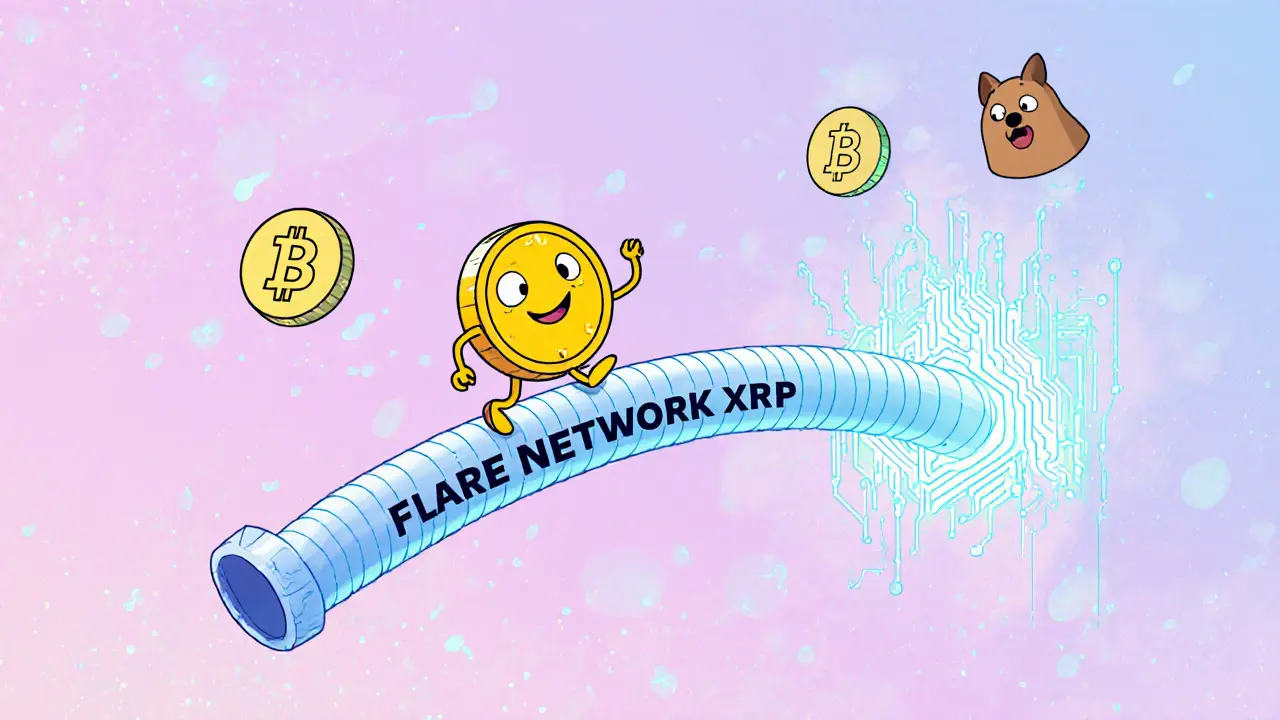Flare crypto: What it is, how it works, and why it matters in Web3
When you hear Flare crypto, a blockchain designed to bring smart contract functionality to networks like Bitcoin and XRP. Also known as Flare Network, it doesn't just copy Ethereum—it solves a real problem: how to use decentralized apps on blockchains that were never built for them. Most blockchains like Bitcoin and Ripple can’t run complex code on their own. Flare changes that by acting as a bridge, letting you lock up your BTC or XRP and use them in DeFi, lending, or tokenized assets—all without moving them off their original chain.
This isn’t theoretical. Flare’s native token, FLR, the utility and governance token of the Flare Network, rewards users who help secure the network by staking their assets. It also powers Time Series Oracle, a decentralized system that feeds real-world data like prices and events into smart contracts. That’s what lets developers build apps that react to stock prices, weather, or even election results—all on top of Bitcoin. Without this, you’re stuck using centralized oracles that can be hacked or manipulated.
Flare doesn’t compete with Ethereum—it expands it. Where Ethereum has high fees and slow confirmation times, Flare offers fast, cheap transactions with full compatibility for Ethereum tools like MetaMask and Solidity. You can deploy your existing dApp on Flare with almost no changes. And because it’s built on a proof-of-stake model, it uses a fraction of the energy of older chains. That’s why projects are moving from Ethereum to Flare for cost savings and scalability.
But Flare’s biggest innovation is its ability to let you earn passive income just by holding Bitcoin or XRP. Through Flare’s Spark airdrop, holders of those coins received FLR tokens based on their balances at a snapshot in 2020. That’s not speculation—it’s a direct reward for being part of a network that Flare needed to connect. Even if you missed the airdrop, the system still works: you can lock your BTC in a Flare-compatible wallet and start earning yield in FLR without selling your original assets.
What you’ll find below are real-world guides, reviews, and deep dives into how Flare fits into the bigger Web3 picture. Some posts explain how to claim FLR tokens if you held XRP or BTC back then. Others break down how Flare’s oracle system works under the hood. There are also comparisons with other bridging protocols, warnings about fake airdrop scams pretending to be Flare, and breakdowns of the top dApps running on the network right now. This isn’t hype—it’s what’s actually happening on the chain, in 2025, with real users and real value being created every day.
26 Aug
2025
Flare (FLR) is a blockchain that brings smart contracts to coins like XRP and Dogecoin. Learn how it works, what FLR is used for, its market status, and why Bitcoin integration in 2025 could change everything.
